Flycatcher Gone: Photos of an Extinct Galápagos Native
Songbird, extinguished
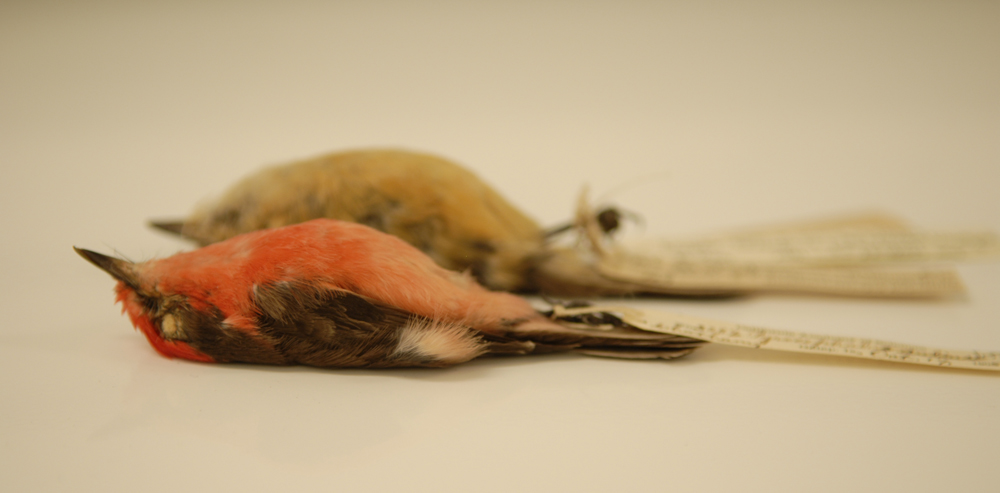
Two San Cristóbal Island vermilion flycatcher specimens lay side by side at the California Academy of Sciences. In May, researchers determined that these birds represent a species of their own, not just a subspecies as once thought. Unfortunately, this realization came too late for the San Cristóbal Island vermilion flycatcher. The birds have not been seen since alive since 1987 and are presumed extinct. [Read full story about the newly discovered Galapagos bird species]
Birds in a row
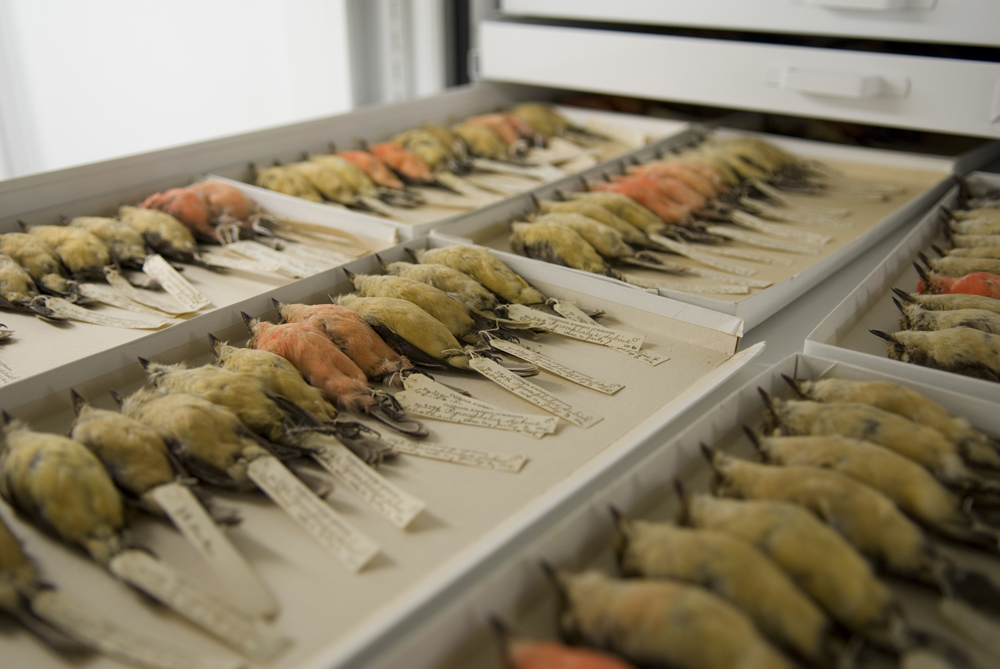
A drawer at the California Academy of Sciences holds various species and subspecies of vermilion flycatchers from the Galapagos Islands. The museum houses the world's largest collection of bird species from the Islands. The loss of the San Cristóbal Island vermilion flycatcher is the first known extinction of an endemic bird species on the islands in modern times. (Endemic animals are those that are native to a particular region and found nowhere else.)
Living relative
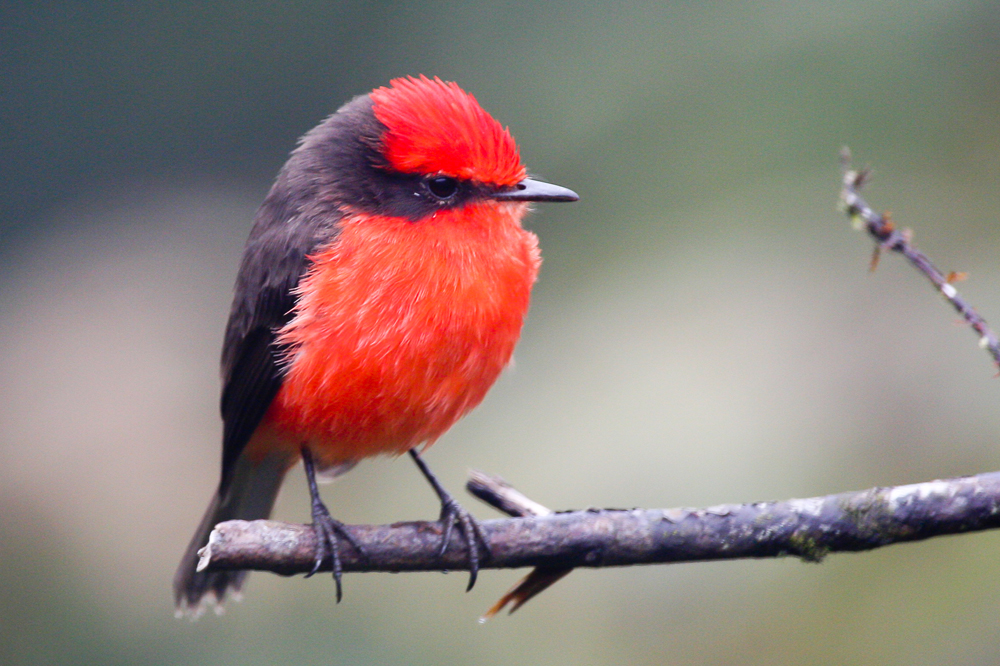
An adult male Galapagos vermilion flycatcher perches on Isabela Island. This species is not extinct and is found across the Galapagos. The San Cristóbal Island vermilion flycatcher was found only on the easternmost island of the Galapagos chain.These bird species are part of a large family of birds found across North and South America, the Tyrannidae (or tyrant flycatchers). Vermilion flycatchers are some of the most colorful birds in this family.
Pretty bird
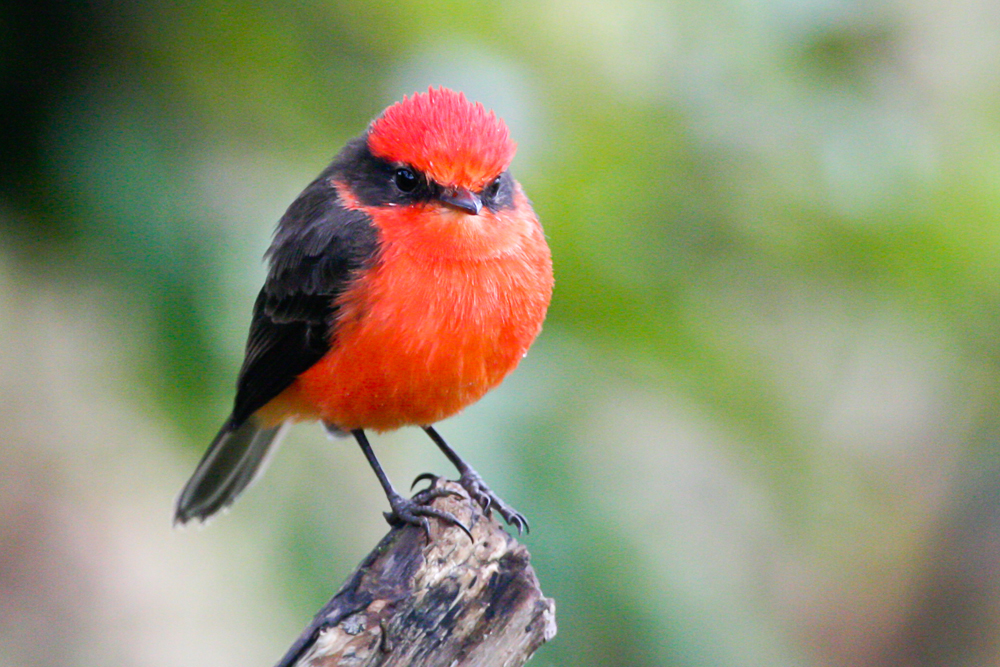
The Galapagos vermilion flycatcher (Pyrocephalus nanus) extinct looks very similar to the presumably extinct San Cristóbal Island vermilion flycatcher (Pyrocephalus dubius). According to the Durrell Conservation Trust, the more widespread bird, pictured here, is in dire straits as well, with populations on the decline. The birds are threatened by invasive, egg-eating rats as well as by the Philornis downsi, a parasitic fly that essentially vampirizes baby birds to death.
Birds in peril
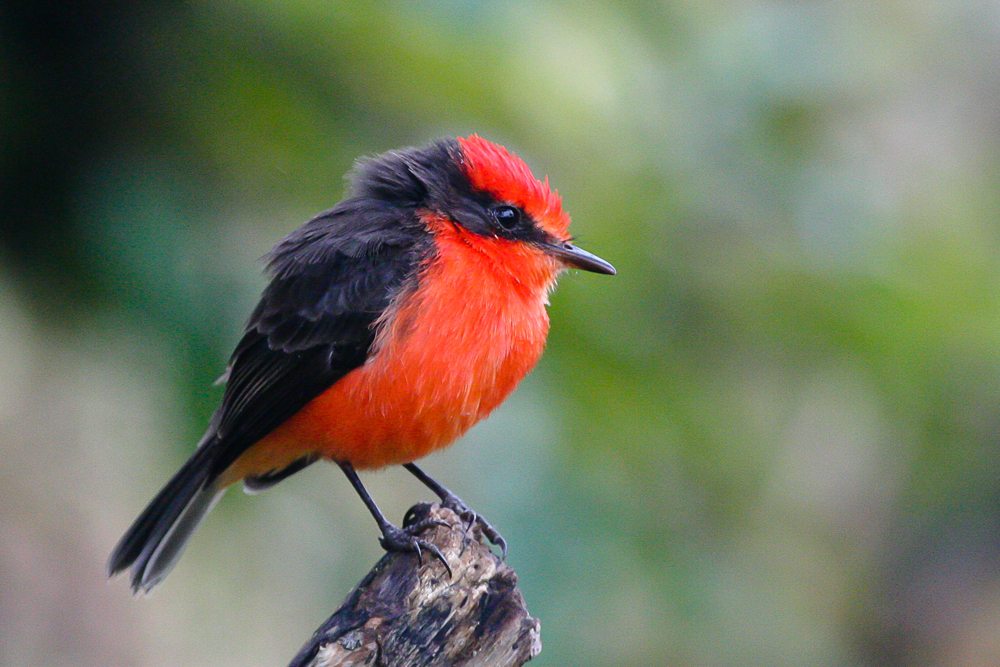
The Galapagos vermilion flycatcher still survives in the Galapagos, but introduced species threaten its survival. Scientists recently reported in the journal Insect Science that they'd found a way to rear the larvae of the parasite fly P. downsi on chicken blood, a method that will hopefully enable them to enact pest control strategies. One potential way to wipe out the invasive fly is to release sterilized males into the environment so that females will mate without having any offspring.
Yellow feathers
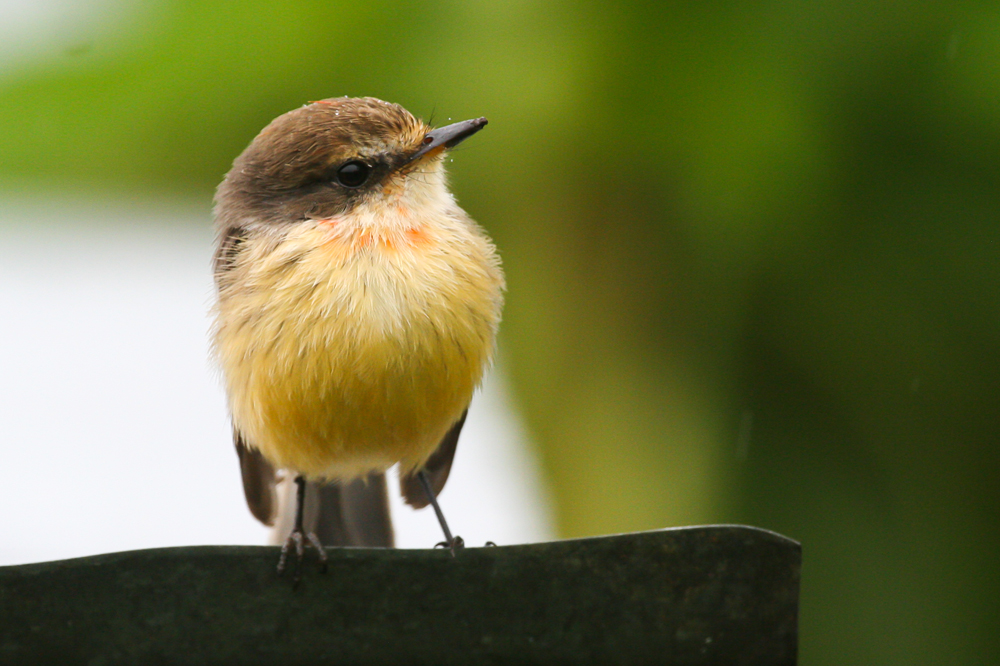
A young male Galapagos Vermilion Flycatcher hasn't developed his mature coloration yet. According to the Cornell Lab of Ornithology, juvenile males start out with dusky coloring and look almost like adult females (which stay grayish brown to pinkish) until they mature.
Presumed extinct
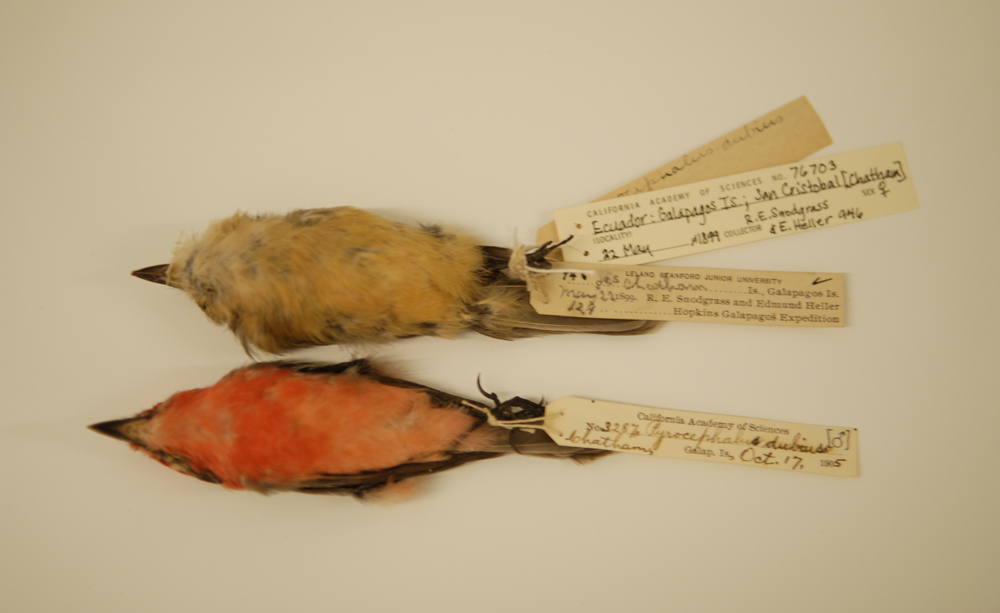
San Cristóbal Island vermilion flycatchers in the California Academy of Sciences collection. The last time these birds were seen alive in the wild was in 1987. These specimens were collected in 1899 and 1905.
Sign up for the Live Science daily newsletter now
Get the world’s most fascinating discoveries delivered straight to your inbox.
Species on the brink
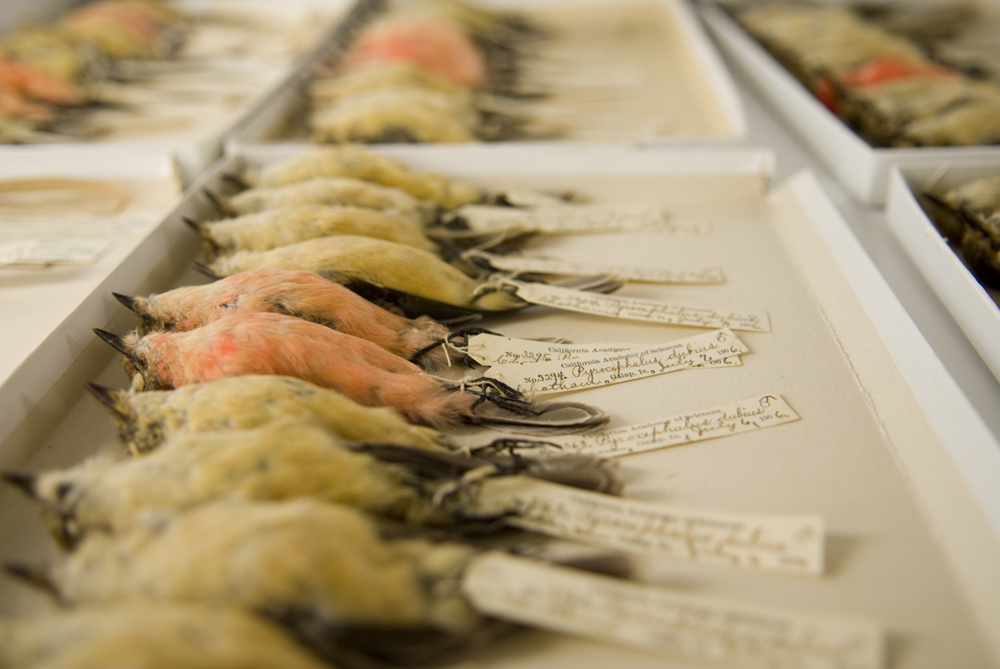
A view of the California Academy of Sciences' collection of vermilion flycatcher species. Researchers used genetic techniques to figure out that the San Cristóbal Island vermilion flycatcher was a separate species.

Stephanie Pappas is a contributing writer for Live Science, covering topics ranging from geoscience to archaeology to the human brain and behavior. She was previously a senior writer for Live Science but is now a freelancer based in Denver, Colorado, and regularly contributes to Scientific American and The Monitor, the monthly magazine of the American Psychological Association. Stephanie received a bachelor's degree in psychology from the University of South Carolina and a graduate certificate in science communication from the University of California, Santa Cruz.










